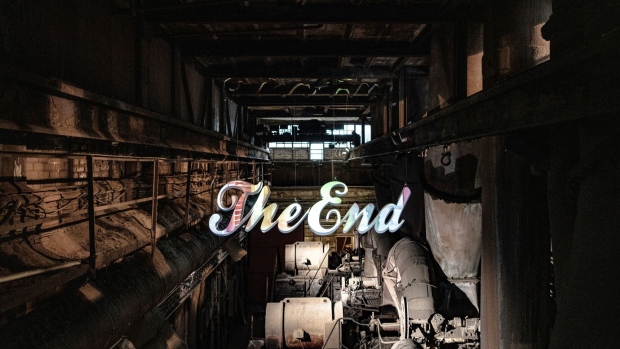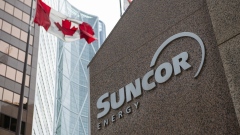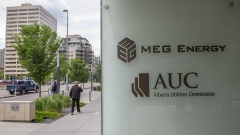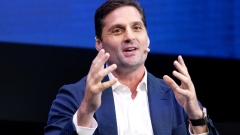Mar 27, 2024
Germany’s €23 Billion Green Experiment to Save Its Industrial Economy
, Bloomberg News

(Bloomberg) -- Europe’s largest economy is running a €23 billion ($24.9 billion) experiment to reach net zero by 2045 without destroying its energy-intensive industrial base.
The government of Olaf Scholz announced earlier this month so-called “climate protection contracts” to help companies in sectors like steel, cement and glass cover additional expenses incurred in using cleaner technologies, compared with conventional processes. Under the program, applicants present proposals for the amount of support needed, with the bids offering the highest CO2 reductions for lowest price receiving funding.
The policy is similar to the Contracts for Difference (CfD) programs that governments have used to help roll out renewables in many parts of the world. Yet the scope of the technologies that it covers is different to anything that’s been tried on this scale, making its success far less certain. The first auction round offering up to €4 billion worth of contracts recently launched, and another bidding opportunity with a €19 billion pot will follow this summer. It’s an “innovative instrument that doesn’t exist anywhere internationally yet,” said Udo Philipp, state secretary in the economy ministry.
Other industrialized nations with equivalent net zero ambitions will likely be paying close attention to the results. Just this week the US government announced $6 billion in grants that makers of metal, paper and glass can use to cut planet-warming emissions.
While governments have experience backing massive deployment of fully developed clean energy solutions, such as wind and solar, there is greater risk when it comes to supporting early-stage technologies such as carbon capture on cement factories and hydrogen-powered copper recycling, on the same level.
“The government really feared that they could choose the losers,” said Jenny Winkler, who was formerly head of the renewables unit at Fraunhofer Institute for Systems and Innovation Research, which often advises the German government on such policies.
Still, she said, those fears should be assuaged as emissions-reduction technologies in sectors like steelmaking have been long tested. “It is not very likely that there are still very disruptive technologies coming in the next years,” Winkler said.
The way the new support system works is tied to Europe’s Emissions Trading System. For example, if a company bids that the cost of decarbonizing steel is €120 per ton, the government will promise to pay the sum minus the price of carbon on the ETS, which currently is hovering around €60 per ton. If in the future the price of pollution goes to €140 per ton, then the company has to pay the government the excess €20 per ton. Once the auction is won, the pricing support is available for 15 years.
Undoubtedly kinks will be worked out along the way. For instance, there may be some arguments against the size of contracts awarded. While most countries make separate CfDs for solar, onshore or offshore wind — taking into account each sector’s individual production costs — Germany’s first industry auction is technology-neutral. This could favor some solutions with cheaper transformation costs over others.
Winkler said over time this should improve. The cost of decarbonizing industry isn’t currently as predictable as renewable energy, she said. The auction could help the government estimate the cost of these new processes and create a ceiling price for technologies in the next tenders.
Meanwhile, companies are being forced into a guessing game of their own with their bids. It remains to be seen how companies will fare with their projected costs for developing hydrogen or other clean technologies that are not yet at scale. If they bid too high a price in the auctions, they risk losing out, and if they bid too low, they will be caught with a contract that could hurt them financially.
Then there are companies whose projects are currently deemed too small to participate at all. Take Hamburg’s Aurubis AG, one of the world’s largest copper recyclers. From May it’s planning to introduce one of the world’s first hydrogen-ready copper smelters. The plan is expected to cost €40 million.
Yet, its project doesn’t meet the requirement for the first round of auctions this month as the emissions it’s offering to reduce does not hit the minimum of 10,000 metric tons. Economy minister Robert Habeck told business representatives last week the government is looking to find ways to support smaller scale projects with the next auction round.
Above all, the government’s main focus is protecting its industrial economy, and it’s also keen to not repeat past mistakes. Two decades ago it invested big in the solar industry, which has virtually disappeared from the country. That’s why it’s reserving these auctions for native companies only, with foreign entities blocked from the pot.
“We are now in a different decade in which industrial perspectives are far more important in every national debate,” said government adviser Karsten Neuhoff from the German Institute of Economic Research. Neuhoff said he hopes the program will help stabilize Germany’s industrial base and, most importantly, secure jobs.
--With assistance from Kamil Kowalcze.
©2024 Bloomberg L.P.








